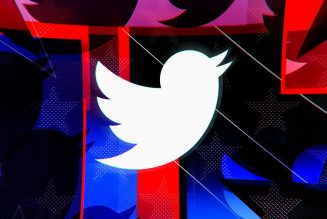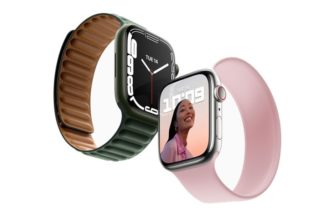
In the US, COVID-19 vaccines are just around the corner, leaving the entire country peering out the window in anticipation of their arrival. Officials and healthcare systems, already taxed by skyrocketing case counts are making sure that everything is prepared when they show up. Here’s a few things still on their vaccine to-do lists:
Save the dates: In the next few weeks, committees with the Food and Drug Administration will meet to decide whether or not to authorize vaccine candidates for Pfizer / BioNTech and Moderna. The Pfizer vaccine is up first, with a meeting scheduled for December 10th. Moderna’s meeting will happen a week later, on December 17. The committee will meet to discuss the mountains of data from the clinical trials, and decide if they are safe and effective enough to be distributed.
While the US is taking some time to do thorough background checks on the vaccines, others have expedited the process. This week, the UK authorized the Pfizer / BioNTech vaccine, putting pressure on the US to do the same.
Seating arrangements: Once the FDA has decided which vaccines are invited to the party, states need to have a plan for their allotted doses. Friday, December 5 was the deadline for states to place orders for the Pfizer / BioNTech vaccine. And earlier this week, a committee of the CDC met to finalize their recommendations as to who should get the vaccine first. The VIPs who are most likely to receive the vaccine first are healthcare workers and people living and working in long-term care facilities.
Menu planning: As expected, the vaccine front runners are both two dose vaccines, and the vaccines have to be given weeks apart. This is a challenge for states who now have to make sure that everyone gets the right vaccine at the right time. They plan to use digital databases to track who got which vaccine, and when they got their shot.
Clearing out the fridge(s): These vaccines have to be kept very cold. They can both stay potent for a while at refrigerator-like temperatures, but for longer-term storage Pfizer / BioNTech’s needs to chill at minus 70 degrees Celsius. That has states clearing out cold storage and buying up dry ice anywhere they can as they prep for the vaccine’s arrival. In Maine, community college freezers may be pressed into service as the state starts vaccinating more people, the head of the Maine Center for Disease Control and Prevention told Slate.
There’s still a lot more to do before the first doses start trickling in. First on the priority list, there’s a surge of cases and hospitalizations that must be stopped. Then, transparent plans and communications need to set the tone for a vaccine campaign. The vaccines need to be delivered equitably, and researchers will have to keep a watchful eye on the long-term effects of the vaccines. But if all of those can be accomplished, and this hastily-planned vaccine effort can be pulled off, it will be a triumph.
Here’s what else is happening this week:
Research
Small Data, Big Implications
How dangerous is it to dine inside a restaurant right now? There’s still a dearth of data, but some fascinating studies are coming out, including a recent one from South Korea, broken down in this article by sociologist Zeynep Tufekci. Tufekci’s newsletter Insight is worth a read — another post this week highlights the efforts of Chinese researchers to sound the an early alarm on this virus.
(Zeynep Tufekci/Insight)
‘Nobody Sees Us’: Testing-Lab Workers Strain Under Demand
In labs across the US, scientists and lab workers are reaching a breaking point as demand for tests continues to grow.
(Katherine J Wu/The New York Times)
Why the CDC changed its Covid-19 quarantine guidelines
The CDC officially changed its guidelines for quarantine this week, shortening the time frame in certain scenarios. The reason why? It hopes more people will stick to a shorter quarantine schedule. Later in the week, the agency urged ‘universal face mask use’ for the first time in a new report.
(German Lopez/Vox)
Development
The COVID-19 vaccines are a marvel of science. Here’s how we can make the best use of them
If you want a really deep dive into how experts think these vaccines should be used, this is an article for you. It lays out the challenges and opportunities facing us all in this next phase of the pandemic.
(Helen Branswell/Stat)
Multidose COVID-19 vaccines will test state tracking systems
States plan to keep tabs on who gets vaccinated and when they get their doses. Here’s how that will work.
(Nicole Wetsman/The Verge)
CDC advisory panel’s lone dissenter on why long-term care residents shouldn’t receive COVID-19 vaccine first
This week, when a CDC advisory panel met to decide who they thought should be the first to receive vaccines, there was only one person who opposed the recommendation. Here’s why she cast a dissenting vote.
(Helen Branswell/Stat)
Hackers are targeting the COVID-19 vaccine supply chain, IBM finds
There’s now evidence that phishing attacks are targeting the vaccine ‘cold chain’. Experts still aren’t sure what the end goal of the infiltration might be, or who is behind it.
(Monica Chin/The Verge)
Perspectives
Find Your Place in the Vaccine Line
To put things in perspective, check out this infographic showing an approximation of where you are in the line for a vaccine.
(Stuart Thompson/The New York Times)
COVID doesn’t care how you vote, where you live or if you die. The fire burns all around us and we are dry grass, from sea to shining sea.
—Mark Morocco, a physician in Los Angeles writing in The Los Angeles Times
For two hours that summer night, there were no sounds but soft piano and the gentle beep beep beep of the monitors. Klein thought about how he would feel if the person in the bed were his own father, and he squeezed his hand tighter. Around midnight, Klein watched as the man took one last, ragged breath and died.
—Elaine Godfrey writes in her article “Iowa Is What Happens When Government Does Nothing” in The Atlantic
More than numbers
To the more than 65,760,928 people worldwide who have tested positive, may your road to recovery be smooth.
To the families and friends of the 1,515,990 people who have died worldwide — 278,594 of those in the US — your loved ones are not forgotten.
Stay safe, everyone.










